The synthesis of art and science is evident when one considers the gardening world. A pivotal method showcasing this harmony is companion planting. This gardening strategy involves placing certain plants nearby for shared benefits. The companion planting chart, a significant tool for many green thumbs, clarifies plant pairings that thrive and those that may conflict.
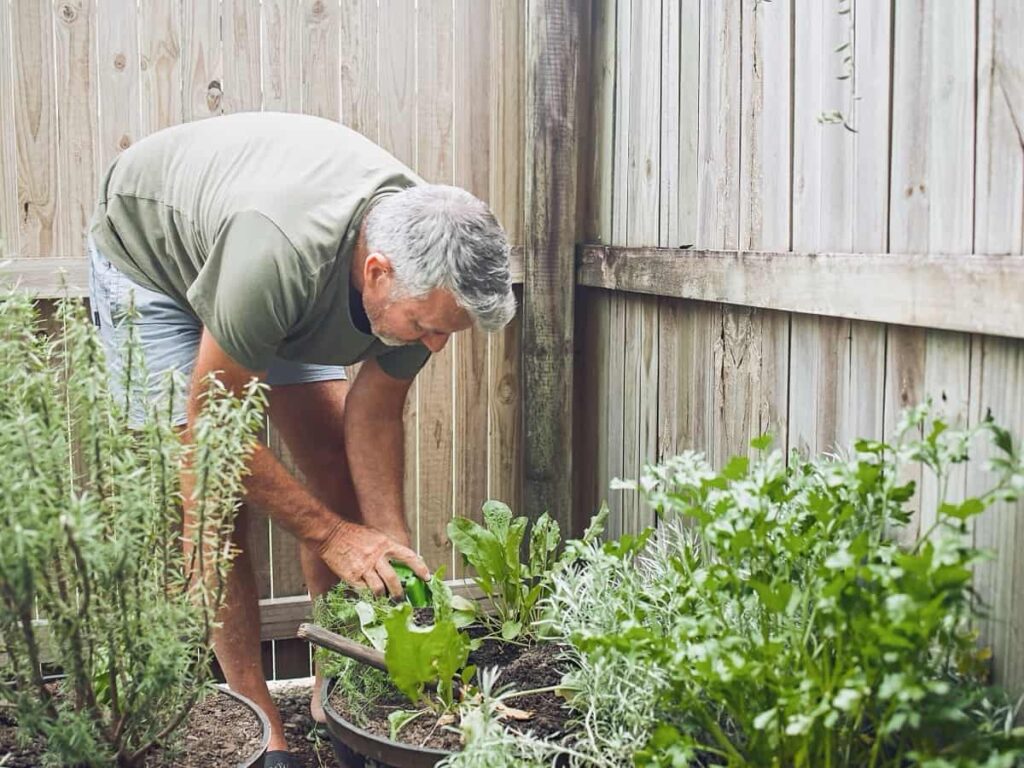
It’s like having a roadmap answering questions like “What herbs grow well together chart?” or providing insights into what is an example of companion cropping. A major element in this technique is the layout. The right layout, particularly for a vegetable garden, can significantly influence the synergy of plants. By correctly using the list of companion plants for vegetable gardens, one not only boosts yield but also beautifies the garden with a blend of vegetables, flowers, and herbs.
The Benefits of Companion Planting in Your Garden
Embracing the companion planting chart in gardening unveils a plethora of advantages. Recognizing which crops can be grown together enables gardeners to bolster soil quality, escalate beneficial insect activity, and even augment plant growth. It’s a cycle of mutual benefit: some plants can deter pests harmful to their neighbors, while others can draw essential pollinators.
This natural balance reduces chemical dependency, pushing gardens towards a sustainable path. Furthermore, companion planting emerges as a solution for those questioning space management, especially in settings like companion planting raised beds. When vegetables are harmoniously paired with companion flowers for vegetables, the utilization of available space is both effective and efficient, even in restricted areas.
Creating a Successful Companion Planting Garden Layout
The quest to determine a good layout for a vegetable garden often leads gardeners to the nuances of companion planting. While the layout is contingent on specific garden dimensions and conditions, there are universal principles that can guide the process. Acquainting oneself with the companion planting chart is the foundational step. This chart informs about plant pairings that work in harmony.
For instance, in space utilization, taller plants might provide shade for their shorter neighbors, and deep-rooted plants might aerate the soil for those with shallower roots. With their space constraints, raised garden beds can particularly benefit from these principles. Gardeners can amplify the productivity of their limited space through companion planting raised beds. Including a mix of vegetables, herbs, and flowers offers visual appeal and fosters a healthier garden ecosystem.
Companion Planting Chart: Vegetables, Flowers, and Herbs
Embarking on the journey through the companion planting chart might seem daunting initially, but with a grasp of the basics, navigation becomes more manageable. For ease of understanding, here’s a brief overview: Vegetables like tomatoes find a great partner in basil but should be kept at bay from potatoes.
In case you missed it: 10 Best Companion Plants for Carrots: What Not to Plant With Carrots
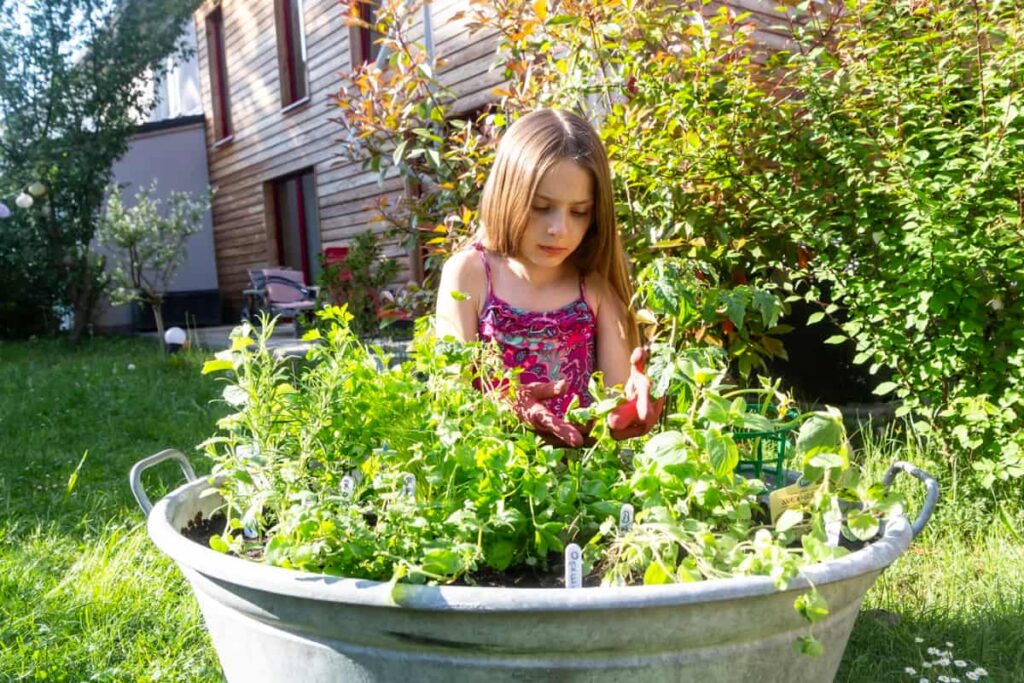
Lettuce, in contrast, pairs harmoniously with radishes and carrots. Marigolds stand out as exemplary vegetable companion flowers on the flower front due to their ability to repel many pests. With their towering stature, sunflowers can serve beans well, offering natural trellises to climb.
Understanding Plant Families for Effective Companion Planting
Comprehending the intricacies of plant families is paramount when diving into companion planting. Plants within the same family often have shared nutritional needs, vulnerabilities to specific pests, and growth habits. By recognizing these familial traits, gardeners can avoid competition for nutrients and minimize the potential for shared diseases. For instance, vegetables like tomatoes, potatoes, and peppers belong to the same family and have mutual pests and diseases.
Gardeners can deter these shared threats by avoiding planting them in succession or close proximity. Inversely, pairing plants from complementary families can be advantageous as they can offer each other benefits, such as improved soil health or pest deterrence. Familiarizing oneself with plant families and their requirements and vulnerabilities can drastically elevate the effectiveness of the companion planting strategy, ensuring a healthier and more bountiful garden.
The Role of Pollinators in Companion Planting
With their vital role in the propagation of many plants, pollinators weave an essential thread in the tapestry of companion planting. Be it bees, butterflies, birds, or bats, these creatures facilitate pollen transfer, enabling plants to produce fruits and seeds. By intentionally choosing plants that attract these pollinators, gardeners can increase their garden’s yield and overall health.
Flowers, particularly, act as magnets for many pollinators. Incorporating them into a vegetable garden not only adds aesthetic beauty but also enhances pollination rates for crops. Recognizing which plants are particularly alluring to specific pollinators and strategically placing them in proximity to crops that need pollination can optimize a garden’s overall productivity and balance. Thus, pollinators are central to orchestrating a successful and harmonious garden ecosystem.
Managing Pest Control with Companion Planting Strategies
A profound advantage of the companion planting methodology is its potential for natural pest control. Instead of chemical interventions, companion planting taps into nature’s mechanisms for keeping pest populations in check. Due to their scent or other properties, certain plants act as repellents for pests that might threaten neighboring plants. For example, marigolds are notorious for deterring nematodes and other soil-borne pests.
Conversely, some plants can attract beneficial insects, like ladybugs and predatory wasps, that naturally prey on pests. By interspersing these beneficial plants among crops, gardeners can create a natural barrier against pests and reduce or eliminate the need for pesticides. This not only safeguards the health of the plants but also ensures a safer, chemical-free harvest. Understanding and employing companion planting strategies for pest control can establish a balanced, thriving, and sustainable garden ecosystem.
Attracting Beneficial Insects to Your Garden through Companion Planting
Companion planting isn’t just about nurturing plant relationships; it’s also about fostering connections with beneficial insects. Many garden allies, from ladybugs to lacewings, play critical roles in suppressing pest populations. Gardeners can naturally draw these helpful insects to their plots by incorporating certain plants. For instance, plants like yarrow, dill, and fennel entice predatory insects that feed on common pests like aphids and mites.
In case you missed it: Eggplant Companion Plants: Benefits and High Yields
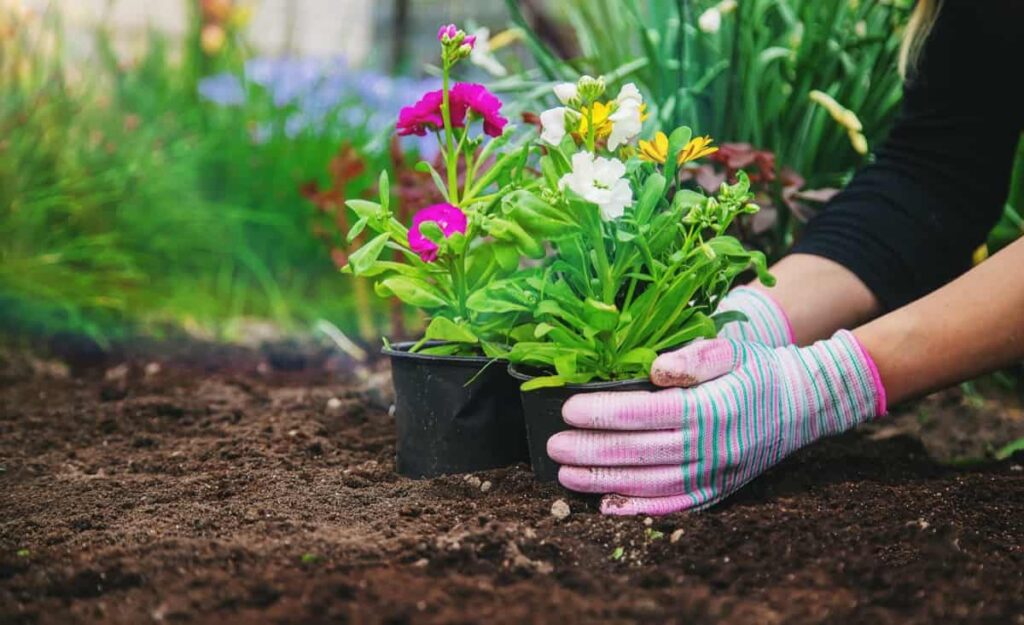
These beneficial insect-attracting plants often possess umbel-shaped flowers, which provide easy access to nectar and pollen. By interweaving these with crops, one not only augments the garden’s aesthetic beauty but also establishes a living defense line against pests. In this symbiotic relationship, plants offer sustenance to insects, and in return, they serve as guardians, ensuring a healthier, more balanced garden ecosystem.
Avoiding Negative Combinations: Plants that Shouldn’t Be Planted Together
While companion planting predominantly focuses on fostering beneficial relationships, it’s equally crucial to be aware of certain combinations that can be counterproductive. When placed in close proximity, some plants can hinder each other’s growth, attract shared pests, or deplete the soil of the same nutrients.
For example, despite belonging to the same family, tomatoes and potatoes can amplify each other’s vulnerability to blight. Similarly, onions might inhibit the growth of beans and peas. Keeping such detrimental pairs apart ensures that neither hampers the other’s growth or well-being. By consulting a companion planting guide and being aware of these negative combinations, gardeners can avoid potential pitfalls and promote a harmonious, thriving garden environment.
Succession Planting and Crop Rotation in a Companion Planting Layout
Companion planting extends beyond determining which plants thrive side by side; it also encompasses practices like succession planting and crop rotation. Succession planting involves sequencing crops so that, as one crop finishes its growth cycle, another takes its place, maximizing productivity throughout the season. For example, after harvesting early-season lettuce, one might plant a warm-season crop like beans in the same spot.
Crop rotation, on the other hand, pertains to changing the location of crops each year. This practice is beneficial as it prevents the depletion of soil nutrients and breaks the cycle of soil-borne pests and diseases. For instance, after growing nitrogen-fixing beans in one plot, one might plant nitrogen-loving corn there the following year. When combined with a well-researched companion planting layout, these strategies can bolster soil health, optimize space, and elevate overall garden productivity.
Tips for Maintaining a Healthy and Productive Companion Planting Garden
While the foundation of a successful companion planting garden lies in understanding plant relationships, its sustenance is driven by consistent care and maintenance. Regular observation is paramount; gardeners can quickly identify and address any issues by monitoring plant interactions and growth patterns. Using mulch is important because it keeps the soil moist, stops weeds from growing, and slowly gives nutrients to the soil. A balanced watering regimen, ensuring neither excessive moisture nor prolonged dryness, promotes optimal plant health.
In case you missed it: Growing Requirements of Kale: Good and Bad Companion Plants of Kale

Diversifying the plant palette is aesthetically pleasing and boosts garden resilience against pests and diseases. Regular soil testing can be invaluable, offering insights into nutrient levels and pH, thus guiding fertilization needs. Above all, patience and persistence are crucial. Over time, with continuous learning and adaptation, maintaining a healthy and productive companion planting garden becomes a rewarding endeavor, yielding bountiful harvests season after season.
Experimentation and Adaptation: Fine-tuning Your Companion Planting Approach
While rooted in age-old wisdom and traditional practices, Companion planting also thrives on experimentation and adaptation. Every garden is unique, influenced by its microclimate, soil type, and local fauna. Therefore, while general guidelines provide a starting point, observing, learning, and adapting to the specific conditions of one’s garden is essential. What thrives in one garden might not fare as well in another, and it’s through trial and error that gardeners discover the perfect combinations for their plots.
Keeping a detailed garden journal can assist in this journey, documenting successes, challenges, and observations. Over seasons, this record serves as a reference, guiding tweaks and changes. It’s also crucial to remain open to new knowledge, as the gardening world is ever-evolving. By embracing a spirit of experimentation and being responsive to the garden’s feedback, one can continually fine-tune their companion planting approach, enhancing harmony and productivity.
Companion Planting Chart for Vegetables
| Vegetables | Companion Plants | Avoid Planting With |
| Tomatoes | Basil, Marigolds, Carrots | Potatoes, Brassicas |
| Lettuce | Radishes, Strawberries | Broccoli |
| Carrots | Tomatoes, Peas | Dill |
| Broccoli | Onions, Beets | Strawberries |
| Beans | Corn, Sunflowers | Onions, Beets |
| Peppers | Onions, Spinach | Fennel |
| Cucumbers | Radishes, Sunflowers | Melons |
| Radishes | Spinach, Lettuce | Hyssop |
| Spinach | Strawberries | Potatoes |
| Peas | Beans, Carrots | Onions |
| Cabbage | Dill, Mint | Strawberries, Tomatoes |
| Zucchini | Beans, Peas | None Specified |
| Brussel Sprouts | Thyme | Strawberries |
| Kale | Beets, Onions | Strawberries, Tomatoes |
| Cauliflower | Celery, Dill | Tomatoes |
| Corn | Potatoes, Peas | Tomatoes |
| Onions | Beets, Carrots | Asparagus |
| Asparagus | Basil, Parsley | Onions, Garlic |
| Garlic | Roses, Raspberries | Peas, Beans |
| Celery | Leek, Tomatoes | Parsley |
In case you missed it: 12 Best Drip Irrigation Kits for 1-acre, 50, 100, and 1000 Plants: Price List Included
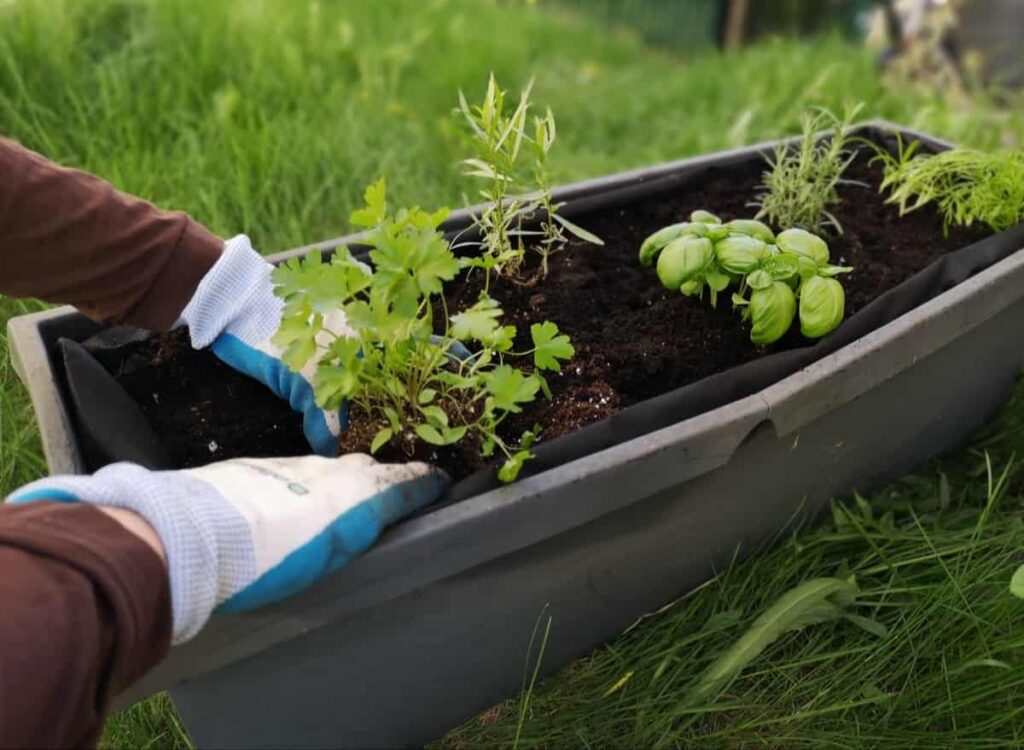
Companion Planting Chart for Flowers
| Flowers | Companion Plants | Avoid Planting With |
| Marigolds | Most vegetables | Beans, Cilantro |
| Sunflowers | Corn, Cucumbers | Potatoes, Peas |
| Nasturtiums | Tomatoes, Cucumbers | Kohlrabi, Mint |
| Roses | Garlic, Onions | Gladiolus, Beans |
| Lavender | Roses, Sage | Marjoram, Oregano |
| Petunias | Beans, Peppers | Dill, Chives |
| Chrysanthemums | Broccoli, Cauliflower | Marigolds, Daisies |
| Cosmos | Corn, Sunflowers | Lavender, Roses |
| Calendula | Most vegetables | Dill, Coriander |
| Zinnia | Beans, Peas | Lavender, Marjoram |
| Geraniums | Roses, Grapes | Cabbage, Tomatoes |
| Asters | Strawberries, Beans | Gladiolus, Daisies |
| Snapdragons | Various vegetables | Roses, Lavender |
| Borage | Most vegetables | Lavender, Geraniums |
| Alyssum | Broccoli, Brussels Sprouts | Daisies, Marigolds |
| Daisies | Corn, Tomatoes | Asters, Alyssum |
| Bee Balm | Tomatoes, Peppers | Marigolds, Daisies |
| Foxglove | Potatoes, Sunflowers | Roses, Daisies |
| Poppies | Lettuce, Spinach | Marigolds, Daisies |
| Daffodils | Tomatoes, Roses | Asters, Geraniums |
Herbs Companion Planting Chart
| Herbs | Companion Plants | Avoid Planting With |
| Basil | Tomatoes, Peppers | Rue, Sage |
| Mint | Tomatoes, Cabbage | Parsley, Chamomile |
| Rosemary | Beans, Cabbage, Carrots | Sage, Thyme |
| Dill | Cabbage, Onions | Carrots, Tomatoes |
| Chives | Carrots, Tomatoes | Beans, Peas |
| Oregano | Broccoli, Peppers | Sage, Thyme |
| Parsley | Asparagus, Tomatoes | Mint, Basil |
| Cilantro | Spinach, Tomatoes | Fennel, Lavender |
| Fennel | Dill, Chives | Tomatoes, Cilantro |
| Thyme | Brussels Sprouts, Sage | Rosemary, Oregano |
| Sage | Cabbage, Carrots | Cucumbers, Oregano |
| Borage | Strawberries, Tomatoes | Lavender, Oregano |
| Chamomile | Cabbage, Onions | Mint, Basil |
| Tarragon | Eggplants, Peppers | Basil, Dill |
| Lemon Balm | Tomatoes, Broccoli | Sage, Thyme |
| Marjoram | All vegetables | Sage, Thyme |
| Catnip | Eggplants, Peppers | Mint, Basil |
| Rue | Roses, Lavender | Basil, Sage |
| Lovage | Most vegetables | Dill, Fennel |
| Horseradish | Potatoes, Sunflowers | Beans, Peas |
In case you missed it: 14 Best Galvanized Metal Raised Garden Beds: For Backyard Vegetables, Herbs, and Flowers
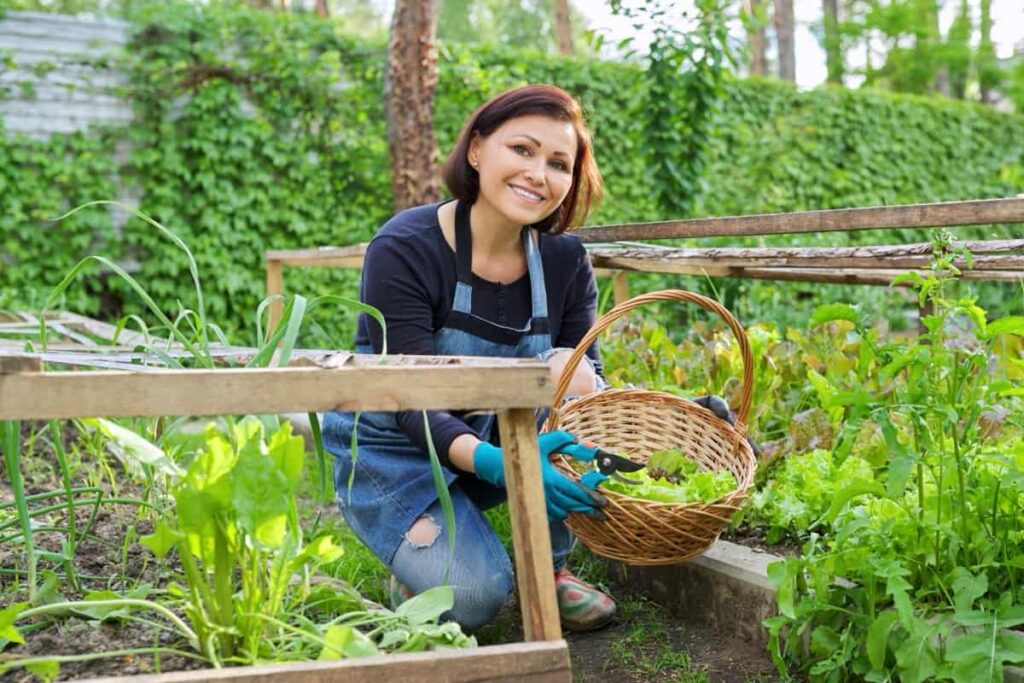
Conclusion
Understanding and effectively implementing companion planting practices in a garden can significantly enhance the overall health and yield of your vegetable, flower, and herb plants. This age-old method, which revolves around creating beneficial relationships between different plants, is vital for novice and experienced gardeners.
With the knowledge of which plants support each other’s growth and which combinations to avoid, gardeners can create a harmonious and thriving garden environment. The practice helps manage pests naturally, minimizing the need for chemical interventions and promoting biodiversity, leading to a more resilient and sustainable garden ecosystem. Regular observation, ongoing care, and a willingness to experiment and learn are crucial components of successful companion planting.
Adapting your garden layout and plant combinations season after season allows you to progressively fine-tune your approach, making room for more fruitful interactions between plants. Utilizing companion planting charts for vegetables, flowers, and herbs as starting guides can simplify this process, offering a clearer understanding of how different plants interact.
Each garden is unique, and the companion planting strategy should be customized to reflect your gardening project’s specific conditions and goals. Through this holistic approach to gardening, you will contribute positively to the wider ecosystem, fostering a space that supports various forms of life and produces abundantly.
- Crops Grown in Summer Season: Best Choices for Summer Gardening
- Organic Pest Control for Tomato Farming
- How to Maximize Sheep Farming Profit
- Broccoli Varieties: Choosing the Right Cultivars for Your Farm
- How to Raise Pigs in Your Own Backyard: A Comprehensive Guide
- Budget Friendly Sheep Shed Ideas: Cheap and Low-Cost Tips
- How Much Do Cattle Farmers Make: Revenue Streams in Cattle Farming
- Management Pests and Diseases in Your Cotton Field
- Sheep Farming Business Plan for Beginners
- Aquaponic Farming at Home: A Step-By-Step Guide
- Profitable Village Farming Business Ideas in 2024
- High-Yield Aquaculture: Fast-Growing Fish for Farming
- Effective Fish Pond Construction Techniques for Beginners
- Irrigation and Water Management in Pineapple Farming
- Blossom to Harvest: Mastering Flowering and Pollination in Papaya Farming
- Pig Fattening Essentials: From Selection to Sale for Beginners
- Raising Wagyu Cattle: A Complete Guide for Premium Beef Production
- Soil Types and Their Water Holding Capacity
- Optimizing Irrigation Schedules for Coconut Groves for Enhanced Yield
- Espresso Your Garden: Coffee Grounds for Healthier Acid-Loving Plants
- The Best Soil Mix for Snake Plants: How to Mix Your Own Snake Plant Soil
- Green Thumb Success: Expert Tips for Cultivating Greenhouse Beans All Year Round
- Bloom All Year Round: The Ultimate Guide to Indoor Hyacinth Care
- Eco-Friendly Gardening: How to Make Liquid Fertilizer from Kitchen Waste
- Ultimate Guide to Grow Anise in Pots: Explore Seed Propagation to Harvesting
- Guide to Raising Chester White Pigs: Discover Breed Facts to Growth Management
- Mastering the Elegance: The Ultimate Guide to Weeping Cherry Tree Care, Planting, and Maintenance
- Ultimate Guide to Planting Garlic in Grow Bags: Growing Strategies for Beginners
- How to Fix Spider Plant Leaf-Related Problems: Natural and Organic Remedies
- 10 Reasons Why Your Tulsi Plant is Shedding Leaves: Home Remedies and Solutions
- Optimizing Growth and Yield: The Advantages of Palm Bunch Ash Fertilizer
- Utilizing Neem Oil Extract as a Natural Pesticide for Hydrangea
- From Soil to Harvest: Various Ways in Which Farmers Can Use AI Tools
- Steps to Encourage and Induce Citrus Flowers: A Comprehensive Guide
- How to Fix Snake Plant Leaf-Related Issues: Natural and Organic Remedies
- Transform Your Garden into a Fragrant Oasis with Raat Ki Rani (Night Blooming Jasmine)
